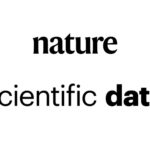
A review of deterministic and data-driven methods to quantify energy efficiency savings and to predict retrofitting scenarios in buildings
Renewable and Sustainable Energy Reviews, vol. 131, October 2020, 110027
Authors: Benedetto Grillonea ; Stoyan Danova ; Andreas Sumperb ; Jordi Ciprianoc, d ; Gerard Morc
a Centre Internacional de Mètodes Numèrics a L’Enginyeria, Building Energy and Environment Group, CIMNE – UPC Campus Terrassa Edifici GAIA, C. Rambla Sant Nebridi 22, 08222, Terrassa, Barcelona, Spain
b Centre D’Innovació Tecnològica en Convertidors Estàtics I Accionaments (CITCEA-UPC), Departament D’Enginyeria Elèctrica, Universitat Politècnica de Catalunya, ETS D’Enginyeria Industrial de Barcelona, Av. Diagonal 647, Pl. 2, 08028, Barcelona, Spain
c Centre Internacional de Mètodes Numèrics a L’Enginyeria, Building Energy and Environment Group, CIMNE-Lleida, Pere de Cabrera 16 2, Office G., 25002, Lleida, Spain
d Department of Environmental and Soil Sciences, INSPIRES, University of Lleida, Rovira Roure 191, 25198, Lleida, Spain
Free to download until 29th August 2020
Abstract:
Increasing the energy efficiency of the built environment has become a priority worldwide and especially in Europe. Because of the relatively low turnover rate of the existing built environment, energy efficiency retrofitting appears to be a fundamental step in reducing its energy consumption. Last experiences have shown that there is a vast energy efficiency potential lying in the building stock, and it is mainly untapped. One of the reasons is a lack of robust methodologies able to evaluate the effect of applied energy efficiency measures and inform about the expected impact of potential retrofitting strategies.
Nowadays, dynamic measured data coming from automated metering infrastructure provides valuable information to evaluate the effect of energy conservation strategies. For this reason, energy performance modelling and assessment methods based on this data are starting to play a major role.
In this paper, several methodologies for the measurement and verification of energy savings, and for the prediction and recommendation of energy retrofitting strategies, are analysed in detail. Practitioners looking at different options for these two processes, will find in this review a thorough and detailed overview of the different methods that can be used. Guidance is also provided to determine which method could work best depending on the specific case under analysis. The reviewed approaches include statistical learning models, machine learning models, Bayesian methods, deterministic approaches, and hybrid techniques that combine deterministic and data-driven modelling. Existing research gaps are identified and prospects for future investigation are presented within the main conclusions of this research work.
Highlights
- Novel techniques to estimate energy efficiency savings in buildings were reviewed.
- Techniques to plan energy retrofitting strategies in buildings were reviewed.
- The focus is on data-driven methods (statistical, machine learning, Bayesian).
- Strengths and weaknesses of every method are analysed.
- Research gaps and prospects for future investigation are presented.





























